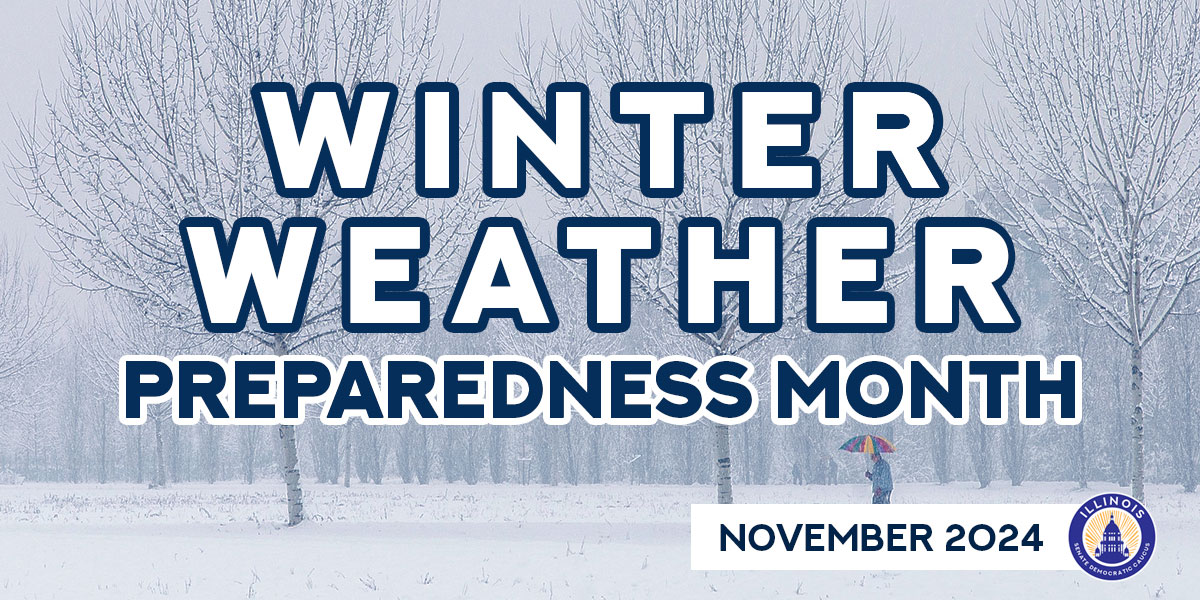
What you should know about being ready for winter:
- Know what to do before, during and after a winter storm.
- Monitor weather alerts and have a preparedness kit ready in your car, home and at work.
- Stay off the road during and after a winter storm.
- Use a carbon monoxide alarm and heating devices safely.
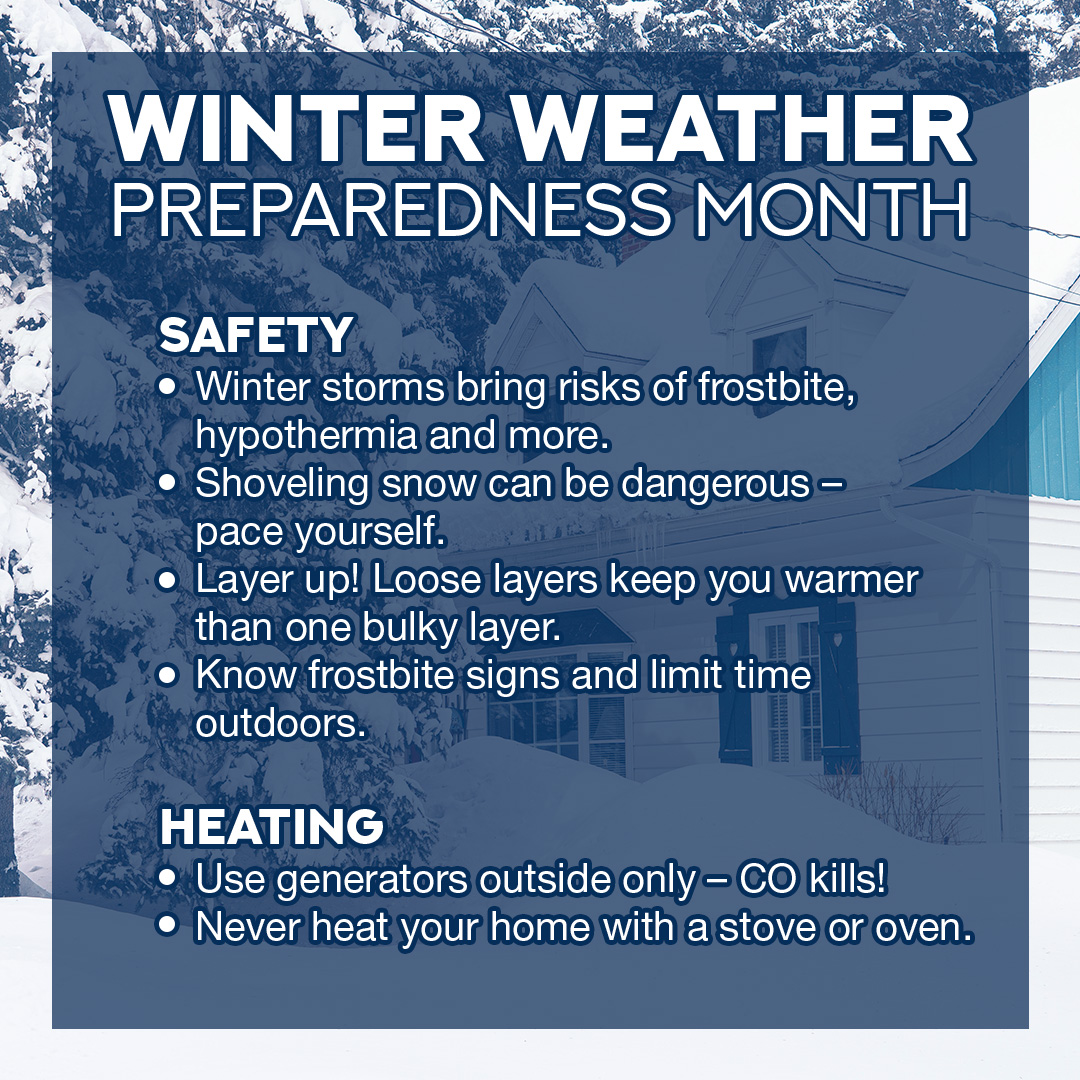
Stay safe during winter weather
Winter storms create a higher risk of car accidents, hypothermia, frostbite, carbon monoxide poisoning and heart attacks from overexertion. Winter storms can bring extreme cold, freezing rain, snow, ice and high winds. Stay safe this winter with these winter weather safety and preparedness tips.
How do I protect my home from winter weather?
Preparation is the best way to protect yourself and loved ones from winter weather. Prepare your home to keep out the cold with insulation, caulking and weather stripping. Pay attention to weather reports, warnings of freezing weather and winter storms. Listen for emergency information and alerts.
In case of a winter weather advisory, gather supplies to keep you safe if you need to stay home for several days without power. Keep in mind each person’s specific needs, including medication, and remember the needs of your pets. Learn how to keep pipes from freezing and make sure to have extra batteries for flashlights and radios. If you are unable to afford your heating costs, weatherization or energy-related home repairs, contact the Low-Income Home Energy Assistance Program for help.
How do I use heating sources or a generator safely in my home?
Generators can be helpful when the power goes out. It is important to know how use them safely to prevent carbon monoxide poisoning and other hazards. Carbon monoxide is a colorless, odorless gas that can kill you, your family and pets. Remember these important safety tips when operating a generator or other heating devices.
- Keep generators outside at least 20 feet away from doors, windows and vents to avoid accidental carbon monoxide poisoning.
- NEVER use a generator, camp stove, charcoal grill, gasoline or propane heater indoors.
- If you’re running a portable generator, you need to have a working carbon monoxide alarm in your home.
- Always connect generators and space heaters to appliances with heavy-duty extension cords.
- Keep anything that can burn at least three feet away from a fireplace, wood stove or space heater.
- NEVER heat a home by using the stovetop or oven.
Heating equipment is a leading cause of home fire deaths in the U.S. To learn more ways to protect your family and keep safe, click here.
How do I keep warm during winter weather?
Cold can kill. Dress in layers, cover skin and limit time outside during cold winter months. Keep in mind that layers of loose-fitting, lightweight clothing will keep you warmer than one bulky layer. Wear bright colors or reflective gear for visibility.
Freezing temperatures increase frostbite and hypothermia risk. While you might not lose the majority of body heat through your head, it loses heat more quickly than other areas. It should be a priority for keeping warm, along with your extremities. Learn the warning signs and basic treatments for frostbite and hypothermia.
Many people die each year from heart attacks brought on by shoveling snow. Dress warm, pace yourself and get others involved to share the work.
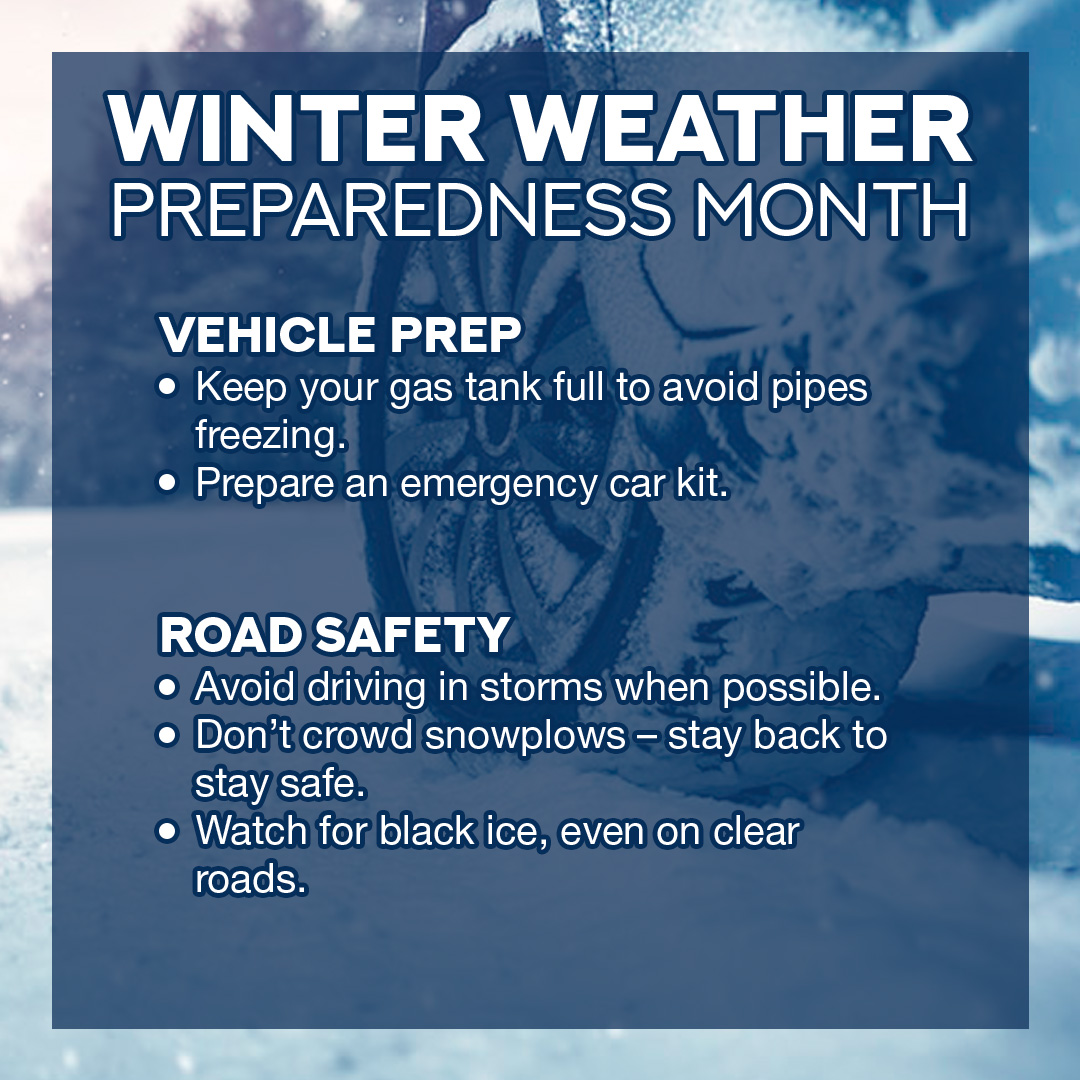
How do I stay safe on the roads during winter weather?
Stay off roads if possible during winter weather. If you must drive, remember to take it slow and give emergency vehicles and snowplows plenty of space. Do your part to keep everyone safe on the roads this winter. Dense or patchy fog can be common during the winter months and is a road hazard. Keep your distance from other vehicles when visibility is reduced, and turn on your low-beam headlights during a fog advisory.
Prepare your car for winter: Keep your gas tank near full to help avoid ice in the tank and fuel lines, and keep an emergency supply kit in your car with jumper cables, reflective triangles, an ice scraper, blankets and cat litter or sand for traction. An emergency kit might come in handy when you least expect it. If trapped in your car, turn on your hazard lights and stay inside.
Know before you go: Drivers should be mindful of winter driving skills and build extra time into their schedules in the months ahead. As part of IDOT’s Winter Weather – Get it Together campaign, travelers are encouraged to follow these simple guidelines:
- Bookmark GettingAroundIllinois.com to check travel conditions 24/7.
- Wear a seat belt. It’s the law in Illinois and your best defense if you are involved in a crash.
- Drop it and drive. Put down the devices – it, too, is the law.
- Do not travel during bad weather unless absolutely necessary. If you must drive, check the weather forecast and make sure someone is aware of your route. Familiarize yourself with public transportation options.
- Slow down. Slower speeds, slower acceleration, slower steering and slower braking are required throughout the winter.
- Don’t crowd the plow. A snowplow operator’s field of vision is restricted. Even if you see them, they may not see you. Any plow that’s hit must be pulled out of service, resulting in one less resource available to clear the roads.
- Watch out for black ice. A road may appear clear but can be treacherous.
- Be especially careful when approaching intersections, ramps, bridges and shaded areas. All are prone to icing.
- Prepare an emergency kit that contains jumper cables, flares or reflectors, windshield washer fluid, a small ice scraper, traction material, blankets, non-perishable food and a first aid kit.
- Carry a cell phone and a car charger in case of emergency. For emergency assistance in the Chicago area, call *999.
- Give first responders and stranded drivers plenty of space. Obey the Move Over Law by slowing down and changing lanes when approaching any stopped vehicle with flashing lights.
- For more winter driving tips, check out this short IDOT video.
GettingAroundIllinois.com is available on both computers and smartphones, with the winter road conditions feature alone averaging more than 2.5 million views each year.
How can I stay safe if sidewalks and crosswalks are snowy or icy?
It is important to recognize the hazards of slippery walks and roadways. There are several things that can be done to reduce the risk of falling when slippery conditions exist.
- Wear boots or overshoes with grip soles such as rubber and neoprene composite. Slick leather or plastic soles on shoes will definitely increase the risk of slipping.
- Before stepping out of your vehicle, look down at the surface. If it’s coated with ice, you might want to park in a different place.
- Use special care when entering or exiting vehicles. Use the vehicle for support. Before standing, brace yourself with the vehicle door and seat back. This will give you some stability.
- Step, don’t jump, from vehicles and equipment.
- Don’t walk with your hands in your pockets. This reduces the ability to use your arms for balance if you do slip.
- Take short, shuffling steps in very icy areas.
- Don’t carry or swing heavy loads, such as large boxes, cases or purses that may cause you to lose your balance when you are walking.
- When walking, curl your toes under and walk as flat-footed as possible.
- Don’t step on uneven surfaces. Avoid curbs with ice on them.
- Place your full attention on walking. Digging in your pocketbook or backpack while walking on ice is dangerous.
- Test potentially slick areas by tapping your foot on them.
- Keep walkways clear of debris, water, ice and slippery materials.
If you suddenly realize you are going to slip, try to reduce your risk of injury when falling:
- Roll with the fall. If you feel yourself falling, experts say you should bend your elbows and knees and try to take the hit on the fleshiest parts of your body, like the side of your thigh, buttocks and shoulder. The number one thing to remember is to protect your head. So if you find yourself falling, pivot to your side and tuck in your head.
- Relax as much as possible when you begin to fall.
- Toss aside the load you are carrying. Protect yourself instead of the objects being carried.
Your community may provide information online on the status of streets and sidewalks during or after a snow or ice storm. Check your town’s website for public works actions.
For information on more things to consider about walking in winter weather conditions - being visible to traffic, staying aware of motorists’ behavior when you are crossing streets and more, visit this Pennsylvania website.
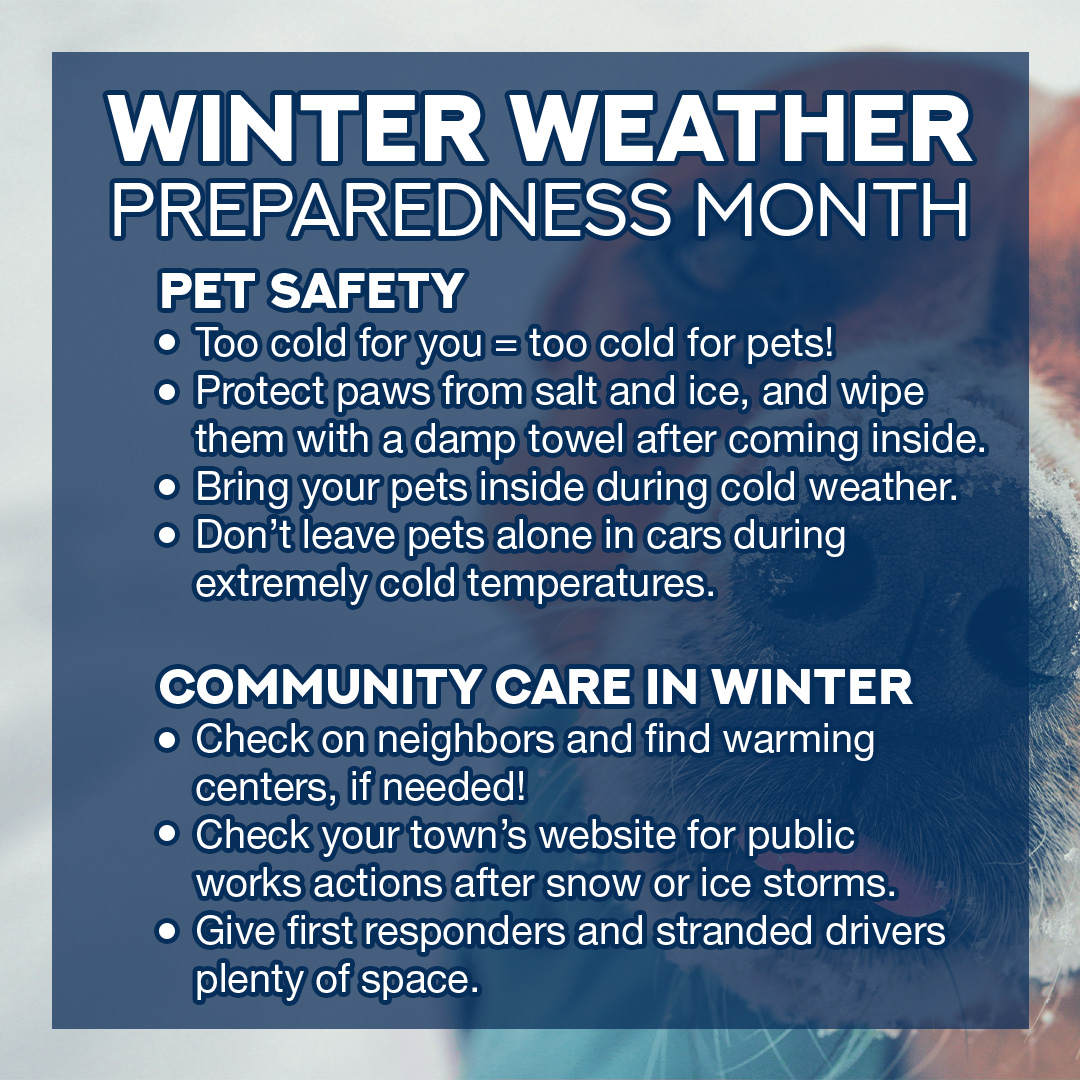
How do I keep my pet safe in cold weather?
Winter weather can be tough on all of us, including our furry friends. If it’s too cold for you, it’s probably too cold for your pet. Bring your pets inside during cold weather and don’t leave pets alone in a car during extremely cold temperatures to prevent them from freezing, becoming disoriented, lost, stolen or injured.
Remember to protect their paws by wiping them with a damp towel after they come inside. Salt and other chemicals used to melt snow and ice can irritate a pet’s paws. You can also massage petroleum jelly or other paw protectants into paws before going outside to protect against irritants.
Winter storms can cause power outages. Make a plan and check on your neighbors if extreme cold or winter weather knocks out your power. FEMA’s search tool helps you find nearby resources near your, including a warming center near you to seek shelter in extreme cold: Office of Emergency Management.






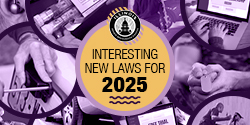





 © 2025 Illinois Senate Democratic Caucus
© 2025 Illinois Senate Democratic Caucus